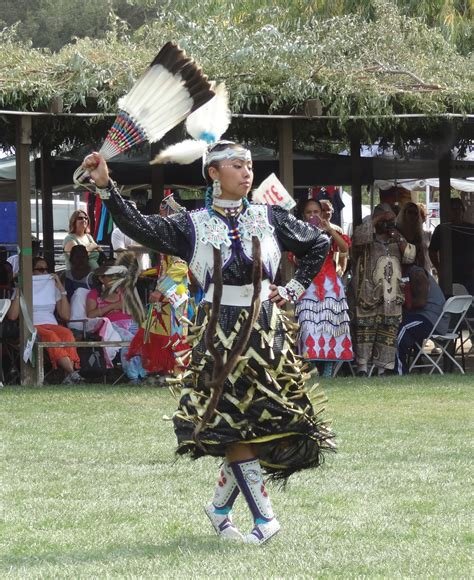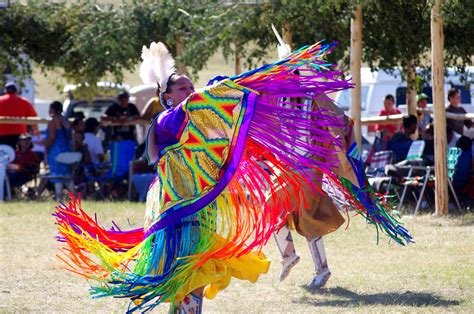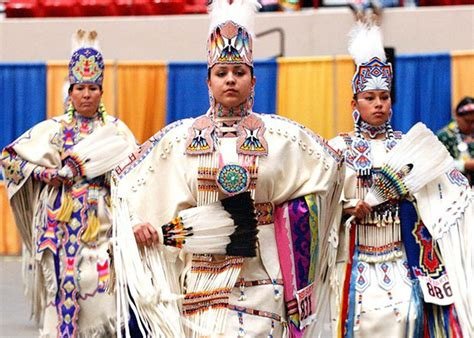Discover the profound meanings and vibrant history behind Native American dance traditions. Explore the Grass Dance, Hoop Dance, Fancy Dance, and more. Learn about the cultural significance and proper etiquette at Pow Wows.
Native American dance traditions stand as some of the most mesmerizing and profound expressions of art, deeply rooted in the cultural fabric of Native American communities. While these dances may appear as simple rhythmic movements to an outsider, they are far more intricate and meaningful. Each dance serves as a storytelling medium, a form of prayer, and a method of honoring and connecting with the natural world.
The Role of Native American Dance Traditions in Community and Culture
In cultures, Native American Dance Traditions is a powerful form of communication and community bonding. Traditionally, dances were performed to celebrate various events—such as harvests, seasonal changes, marriages, and tribal gatherings. These dances, often accompanied by feasts and storytelling, were crucial for fostering unity and cultural continuity within the tribe.
If you’ve ever attended a Pow Wow or an inter-tribal gathering, you may have encountered some of the most iconic dances:
1. Grass Dance
The Grass Dance is one of the oldest and most revered dances in Native American Dance Traditions. Originating with the Northern Plains Indians, particularly the Omaha-Ponca and Dakota Sioux tribes, this dance is steeped in history and symbolism. Originally performed to prepare the dance arena by flattening the grass, the Grass Dance has evolved into a vibrant celebration of movement and spirituality.

Legend has it that a young, disabled boy from the Northern Plains had a vision of himself dancing among the grasses. Inspired by this vision, he created the Grass Dance, which now serves as a tribute to the earth and ancestral spirits. Today, both men and women participate in the Grass Dance, which remains a staple at inter-tribal gatherings, offering blessings to both dancers and spectators.
2. Hoop Dance
The Hoop Dance is a captivating display of agility and storytelling. Using hoops to form dynamic shapes, dancers recreate the movements of animals and natural elements. This Native American Dance Traditions, believed to have originated as part of healing ceremonies, symbolizes the interconnectedness of life through its endless circular form.

Various legends exist regarding the origins of the Hoop Dance. Some tribes recount a tale of a dying man gifted with hoops by a creator, while others trace it back to cliff-dwellers teaching children. According to Anishinaabe legend, a boy named Pukawiss, initially rejected by his tribe, developed the dance by mimicking animal movements and became a revered figure.
In contemporary performances, the Hoop Dance is often executed solo, with dancers using multiple hoops to represent life elements such as humans, animals, and natural forces. The dance is characterized by rapid, intricate movements that form shapes and patterns, illustrating the dance’s deep symbolic meaning.
3. Fancy Dance
The Fancy Dance, a more recent addition to Native American Dance Traditions, was developed in the 1920s and 1930s by the Ponca tribe as a way to preserve their cultural heritage during a time when traditional dances were prohibited. This high-energy, colorful dance is a modern adaptation of the traditional War Dance, popularized further by figures such as Buffalo Bill.

The Fancy Dance is known for its vibrant regalia and athleticism. Dancers wear elaborate outfits adorned with feathers, beads, and bright colors, performing rapid, energetic movements. This dance has become a hallmark of public Pow Wows and is a competitive sport in inter-tribal gatherings.
4. Native American Dance Traditions: Women’s Jingle Dress Dance
The Women’s Jingle Dress Dance is a graceful and spiritually significant dance originating from the Ojibwe people. Traditionally performed as a healing ritual, the dance is connected to a young Ojibwe woman’s dream. The jingle dress, adorned with 365 metal cones—one for each day of the year—symbolizes the dancer’s connection to the earth and the power of prayer.

During performances, jingle dress dancers move rhythmically to drum beats, raising their fans to send prayers in all directions. This dance is performed for the sick or injured, emphasizing the healing and spiritual aspects of the tradition.
5. Women’s Fancy Shawl Dance
The Women’s Fancy Shawl Dance, a relatively recent addition, reflects a vibrant transition from childhood to adulthood, akin to a butterfly emerging from its cocoon. The dance features bright, ornate shawls and regalia, with movements inspired by the ceremonial butterfly dance.

This dance is characterized by its colorful and elaborate costumes, signifying the dancer’s transformation and growth. It represents a celebration of female strength and grace within Native American communities.
Understanding Native American Dance Traditions Regalia
A crucial aspect of Native American dances is the regalia worn by dancers. These elaborate outfits are often handcrafted and hold deep spiritual significance. Regalia can take years to create and is a reflection of the dancer’s personal journey and cultural identity. Many adornments are passed down through generations or acquired over time, embodying both historical and spiritual value.
Etiquette at a Native American Pow Wow

Attending a Pow Wow can be a profound and educational experience. To show respect and appreciation for the cultural practices, consider the following guidelines:
- Show Respect: Acknowledge the importance of the dances, ceremonies, and traditions being presented.
- Follow the MC’s Guidance: Pay attention to the Master of Ceremonies for instructions on appropriate behavior and participation.
- Respect Photography Rules: Take photos only where permitted, and avoid capturing certain ceremonies without permission.
- Avoid Touching Regalia: Ask for permission before touching any dancer’s regalia, as it holds deep spiritual significance.
- Be a Considerate Guest: Treat the event with the reverence and respect you would at any important gathering.
By understanding and honoring these Native American Dance Traditions, you gain a deeper appreciation for the rich cultural heritage of Native American communities.